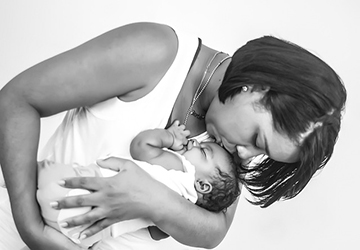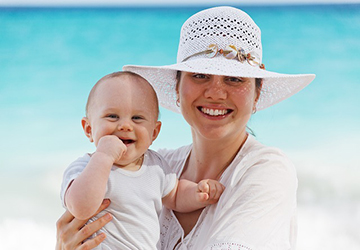The Psychological Concept of Infant Attachment
What is the attachment theory?
According to attachment theory, a child will develop a close emotional link with a caregiver within the first six months of life if the caregiver is appropriately responsive. This hypothesis is based on research in developmental psychology.
What is the goal of attachment?
The goal of attachment is not to play with or amuse the child (this would be the parent's role as a playmate), provide for the child's needs (this would be the parent's role as a caregiver), impose rules on the child (this would be the parent's role as a disciplinarian), or impart knowledge to the child (this would be the role of the parent as a teacher). When a kid is attached, they use their primary caregiver as a safe base to explore and, if required, as a place of refuge and solace.

Behaviors showed in infants
Early in life, pre-attachment behaviors start to appear. Infants smile, talk, and cry during the first phase (the first eight weeks) to catch the attention of potential carers. Even though babies at this age start to distinguish between different caregivers, these behaviors are directed at anyone nearby.
By the end of the first year, the infant can demonstrate various attachment behaviors meant to keep the relationship close. They object to the caregiver's departure, rejoicing in their return, clinging to them in times of fear, and following them when they can.
Separation anxiety
Separation is a distinct stage in a child's growth. They experience it when they get frightened and anxious after being away from their primary caregivers, and the presence or absence of familiar faces may agitate them.
How to handle attached infants?
It can be unpleasant if you return to work and see your child displaying a preference for one parent. Parents and infants experience emotional ups and downs. So here are some recommendations for managing this 'clingy stage.'
Slowly build up separation:
You might start by trying to leave them with someone they know well for a brief period. Increase the length of their interactions with less familiar persons progressively. They'll rock up.
Try practicing brief separations in your home. For instance, you may talk to your kid in another room and then return and let them know you were gone, and they will realize that you are only temporarily gone.

Avoid crying when you go somewhere:
Sure, dropping off your kid at the nursery for the first time makes you want to cry like a heartbroken 18-year-old. But hold on. Laugh, wave, and then turn the corner to find a coffee shop and a trustworthy friend so you can cry there.
An attached infant will not benefit from sensing your tension in any way. Although it's not always straightforward, try to keep your distress from them.
Have some patience:
We assure you that your baby's clinginess won't last forever. You'll go to work one day, joyfully waving them off at the nursery. Without thinking, you'll leave them at your friend's house for half an hour.
See your doctor if severe separation anxiety interferes with everyday activities and persists throughout preschool, primary school, or beyond. It can be a symptom of the common condition known as separation anxiety disorder.
Show them trust:
Your baby doesn't need to stop abruptly since being clinging isn't a drug addiction. Thus it's perfectly appropriate to assist them in adjusting to a life of independence.
Keep an eye on your child the first few times if they go to a new daycare or stay with a new caregiver. In this manner, they will also gain your trust while you are still in the room. To get your child used to being away from you longer, try leaving them briefly.
Make a routine schedule:
Babies benefit from regular rhythms in their goodbyes, much like they do at night. Choose a strategy that works and stay with it, whether it's a kiss, wave, and a "mummy will be back soon" or another version. Establishing an exit ritual is vital as it will help kids learn that 'mummy always goes after kissing and saying goodbye and comes after some time.'
Let them gain their independence:
Have some patience if your youngster clearly hates you leaving the house but will gladly crawl into another room alone. Please wait a few minutes before pursuing them, provided the rooms are child-proof. If you do that, they will become a little more accustomed to life without you.
Don't feel guilty:
We can assure you that this is untrue if your concern regarding the clinging period is that you're traumatizing them for life. Instead, they're experiencing a typical stage on the road to independence.
In time, your child will realize that you always come back when you leave, which comforts them. Oh, and just so you know, it also indicates their strong bond and commitment to you. So congratulate yourself on it.
Share your plans with them:
You could discuss your plans with older infants and toddlers. You may discuss the meal you will share later, the play date you will take them on once the nursery is done, or the book you will read together this afternoon.
By doing this, you're reiterating the idea that you're coming back. To instill confidence in your child, you must keep your word.
Conclusion
The quality of the infant-parent relationship can strongly predict a child's later social and emotional development.
Some children with attachment disorders require professional assistance, such as family therapy, psychiatric counseling, play therapy, etc. Parenting classes could be beneficial as well. Please ensure you communicate with a qualified expert involved in your child's life, such as a health visitor, school nurse, early childhood setting, or early education center.


